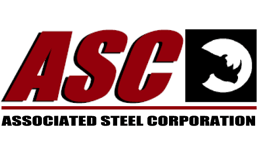THE 300 SERIES OF STAINLESS STEEL
If a steel has more than 10 ¾% Chromium content, it is classified as a type of Stainless Steel. There are many types (grades) of Stainless Steel, just as there are many types of corrosion. One grade of stainless steel may work well with one type of corrosion and then be terrible for service in another type of corrosion. The most common stainless grade is 304. Modify it a bit (improve) and you get 316. Enhance that a little, and you get 317. If you add Sulphur to type 304 stainless, you get 303 stainless, which is a “Free-machining grade”. Note: Generally, as you add elements to stainless steel to improve machinability, or strength, you may lessen strength and service-life.
Three hundred series grades are often referred to as; 18-8 stainless; where the 18 stands for percent of chromium content and 8 refers to the percent Nickel content. Those grades have some commonalities; grain structure of Austenite, non-magnetic, not generally responsive to thermal hardening, ability to work-harden.
Steel that has an Austenitic grain structure is not hardenable by heat treatment, but it is hardenable by cold working. Austenitic stainless grades are non-magnetic; i.e. they won’t, under general conditions, attract a magnet.
Strain-hardening, Cold-drawing, Cold-Finished, Cold-working, and Work-hardening, are all pretty much synonyms. Bang it around, Squash it, or keep bending it back and forth and it’s going to get harder; sometimes near 50RC hard.
18-8 Types of stainless steel are popular (common) for good reason. They are excellent for many applications exposed to corrosion, and they are readily available from suppliers. There are of course limitations imposed by various specific types of corrosion as well as limitations imposed by physical characteristics of the actual parts required (strength, straightness, etc). We will explore those in later posts.
-Howard Thomas, October 17th, 2022
